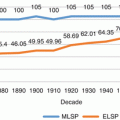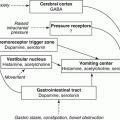© Springer International Publishing Switzerland 2017
Lawrence Berk (ed.)Dying and Death in Oncology10.1007/978-3-319-41861-2_33. Dying: What Happens to the Body After Death
(1)
Consulting Forensic Pathologist, 400 North Ashley Drive, Suite 1900, Tampa, FL 33602, USA
3.1 Physical Decomposition of the Body
The tissue of the body begins to decay or decompose immediately after death, but few decompositional changes are immediately visible to the naked eye.
3.1.1 Autolysis
Within seconds of the circulation of blood ceasing, the tissues become acidic as the cells turn to anaerobic means of deriving energy from glucose or fatty acids. When anaerobic energy sources are depleted, the cells begin their own dying process, which is called autolysis. Cell nuclei and cytoplasmic organelles swell and become distorted. These changes are visible with an electron microscope within seconds. Red blood cells in the blood stream take on water, swell, and burst, releasing free hemoglobin and potassium into the plasma. Underperfusion of tissues by blood is called ischemia. The results of ischemia can be seen using an ordinary light microscope within an hour or two in tissues such as brain and heart muscle, and within a day or two in other tissues. The organ most sensitive to the lack of blood flow is brain. Cartilage, ligaments, tendons, and gristle tissue in general are the most resistant to ischemia.
3.1.2 Classical Signs of Death
Algor mortis is an old-fashioned term for postmortem cooling of a dead body. In general, a dead body cools to ambient temperature after death. In warm climate, anaerobic bacterial metabolism in the large intestine may produce a brief rise in rectal temperature after the human host is dead.
Livor mortis, also known as postmortem lividity, denotes the apparent staining of skin caused by gravitational settling of red blood cells within the blood vessels after death. In a supine body (lying on the back), the blood settles in the back. Because the blood is not oxygenated, the skin appears purple. The first hint of livor can appear in half an hour in good light. Livor is especially prominent when death is by heart attack or asphyxia, and is minimal when death is by exsanguination or trauma of the brainstem or cervical spine. In the presence of carbon monoxide poisoning, the livor is red rather than purple. If a body is put into a new position within hours of death, the blood will shift into a new pattern of lividity that reflects the new position. Later, as capillary vessels become so engorged that they cannot drain, the livor will not shift, and is said to be fixed. When livor involves the face, family members and funeral directors can mistakenly think that they are seeing bruises from trauma.
Muscle relaxation is a high-energy state. In the absence of oxygen, muscles have inadequate access to energy and become stiff, whether the person is alive or dead. In a dead person, muscle stiffening is called rigor mortis. If a muscle is being heavily exercised just before death, that muscle can go into rigor almost immediately after death; this effect was once known as “cadaveric spasm.” In the absence of heavy exercise, rigor mortis becomes readily apparent within a few hours of death, builds to a maximum for some hours, and then fades in parallel with the onset of putrefactive decomposition. If a body is moved after rigor mortis has set in, the original attitude of the limbs will be preserved. However, rigor can be overcome by passive stretching of a joint, and once the rigor is overcome in the muscles holding a joint in flexion, the rigor does not return. Funeral directors sometimes must overcome rigor in the limbs in order that the body lie properly for transport and viewing. The apparent strength of fully developed rigor mortis is directly proportional to the muscle mass of the dead person.
3.1.3 Putrefaction
In temperate climates, if a dead body is left at ambient temperature, putrefactive decomposition ensues. Putrefaction is the bane of funeral directors. Putrefaction begins with the indigenous bacteria of the intestines. After death, when the intestines are deprived of oxygenated blood, the cells in the intestinal wall that normally keep bacteria confined to the inside of the intestine fail and thereby permit bacteria to migrate across the intestinal wall into the stagnant blood in the blood vessels serving the intestine. From those local vessels, the bacteria make their way into systemic blood vessels. When intestinal bacteria such E. coli reach this blood, they begin to use the blood as a nutritional source, just as they would in a petri dish filled with blood-enriched agar. When bacteria consume glucose and other nutrients in the blood, the bacteria extract energy and emit gases such as carbon dioxide, methane, and sulfurous gases. Carbon dioxide and methane are produced in large quantities and cause gaseous swelling of the organs and limbs. Hydrogen sulfide, the gas that has the odor of rotten eggs, contributes to the foul odor of putrefactive decomposition. Bacterial consumption of amino acids and peptides derived from proteins produce particularly foul gases. The hydrogen sulfide interacts chemically with the iron in hemoglobin and myoglobin and changes the color to black-green. The first appearance of this green color is often in the skin of the right lower abdominal area. The production of gases by bacteria can be so prodigious as to float a dead body that is chained to barbell weights and thrown into the sea. The pressure of gases inside the torso often forces red-brown froth from the lungs to discharge from the mouth and nose.
While a body is bloating from the gases and discoloring from the sulfides, the top layer of the skin (epidermis) begins to detach from the underlying dermis, due to lack of an oxygenated blood supply to the desmosomes. Desmosomes are like biological rivets that are visible with an electron microscope and that serve to keep the epidermal cells attached to the dermis. The sloughing of epidermis in a decaying body is usually called skin slippage by forensic pathologists.
The odors of putrefaction attract flies, which then lay their eggs on or near the body. The eggs hatch, and the larvae, known as maggots, feed on the decomposing flesh. After going through up to three growth stages, the maggots crawl away, pupate, and then emerge as flies.
As the mass of the body is reduced by the feeding of maggots, beetles are attracted. The beetles feed on the gristly tissue that is too tough for the maggots. At any of these stages, if carnivores have access to the body, they may feed on it, or drag the body parts several feet away.
Stay updated, free articles. Join our Telegram channel

Full access? Get Clinical Tree






